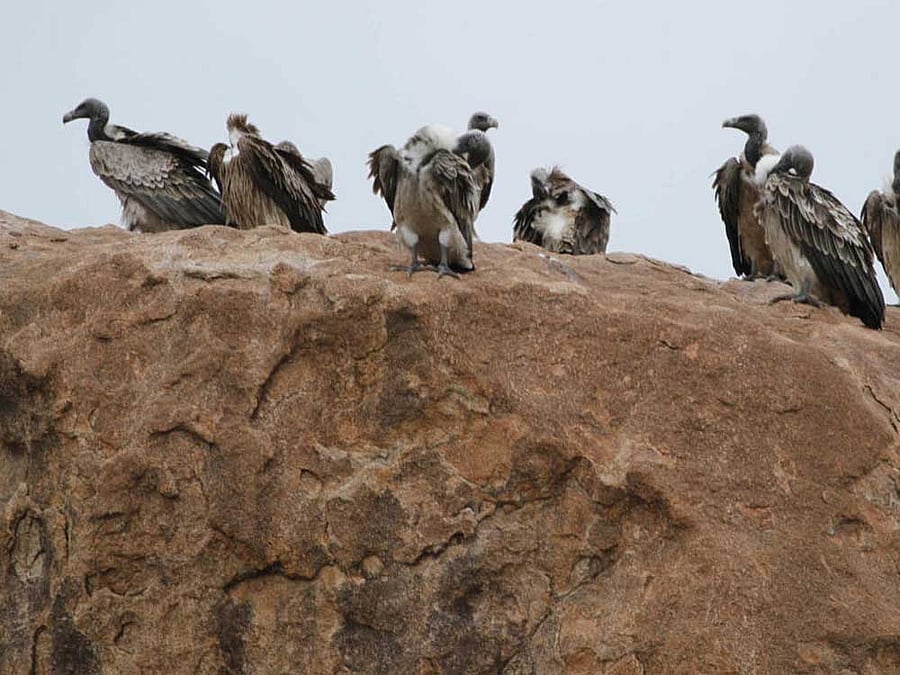
Long-billed vultures (LBVs) in groups of 20-30 have been sighted in some forest patches of Karnataka, heartening forest officials and conservationists.
At least 30 LBVs were spotted feeding on a carcass in Raichur while another group of 20 was seen feeding in Muthathi, Mandya district. The department is wary of sharing the exact location and date of the sightings for fear of attracting poachers. It also fears that wildlife photographers will flock to these places and scare the LBVs which are trying to come back.
N Shivaraj, Deputy Conservator of Forests, Raichur, said the vultures were seen occasionally feeding on carcasses. There is a goshala nearby and cattle enter forest patches for grazing. The department is striving to protect the habitat.
While the sightings have been hailed, ornithologists and forest officials wonder where are the vultures roosting as their hatchlings have not been sighted for years. India’s first and Karnataka’s only vulture sanctuary in Ramanagaram has not more than 15 LBVs.
“Sightings have been there, but the worry is where are the LBVs roosting and where are their hatchlings. Vultures of Ramanagaram fly long distance for food. They travel to MM Hills, Cauvery Wildlife Sanctuary, Muthathi, Bandipur and Nagarahole and return to Ramanagaram,” said S Subramanya, a noted ornithologist from Gandhi Krishi Vignana Kendra, Bengaluru.
Shashi Kumar, Secretary, Karnataka Vulture Conservation Society, who studies the vultures, said an LBV lays only one egg per year. Unlike the Egyptian vultures, the LBVs feed on large carcasses and rest on hillocks because of their size.
M N Vijay Kumar, Deputy Conservator of Forests, Ramanagaram, said forest staff hadn’t spotted any hatchling on the roosting habitat in the hillocks. The only hope is that the sightings continue, he added.
A large vulture population was wiped out in the 1990s as veterinarians administered diclofenac (an anti-inflammatory drug used to reduce pain) to cattle. The Centre banned the veterinarian diclofenac in 2006, but human diclofenac is still being administered illegally to cattle, which continues to remain a threat.
Aiming to revive the LBV population, the Forest Department declared a 346.41-hectare area in Ramanagaram hillock a vulture sanctuary on January 30, 2012. But it does not feed them cattle carcasses like it is done in the Northeast and Nepal.
Chris Bowden, International Species Recovery Officer and Saving Asia’s Vultures from Extinction (SAVE) Programme Manager (South Asia), said the population in Ramanagaram could be revived if the use of diclofenac was curtailed in the 60-km radius of the hillocks.
“Not just LBVs, but also King, Slender Billed and White Rumped vultures face threat and are near-extinct,” he told DH.
He added that an alternative to diclofenac, called Maloxican, was available in the market. This drug is produced by different companies, but veterinarians do not want to shift.
“There is also a need to stop activities such as rock climbing, hand gliding and trekking. Though a designated sanctuary is a good idea, disturbances around the area should be also be handled,” he said.
DH News Service